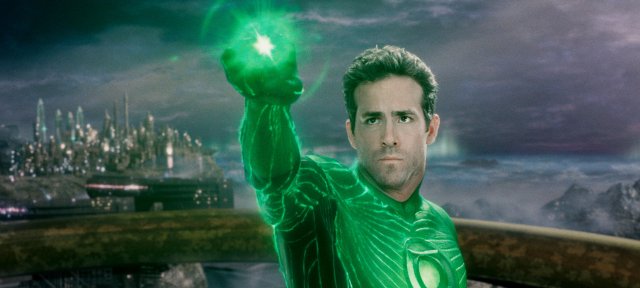Cyborg Uprising Part 1: Rise Of The Machines

Cyborgs have gotten such a bad rap in the media. Movies, television, books, comics, and the like all seem to focus more on villains such as Darth Vader, Cybermen, and The Terminator. They somehow take attention from such good cyborgs like Steve Austin, Iron Man, and Robocop. This kind of discrimination shouldn’t be tolerated in more enlightened times. Unfortunately, all too often, the idea of a mechanical-biological mix tends to be one notch above zombies on the likability scale.
![Dead or alive, you're coming with me." [courtesy er.jsc.nasa.gov]](http://SciFi4Me.com/wp-content/uploads/2013/04/robocop_robot_fight.jpg?w=594)
The cyborg, or bionic human, is most simply defined as part human/part machine. It can be a mechanically augmented human or a humanly augmented machine. Is it something as simple as wearing glasses or a hearing aid? One could make the argument that a wristwatch would constitute a cybernetic enhancement since the machine allows the wearer to accurately gauge the passage of time, which one can’t normally do unassisted. Nanobots in the blood stream can also constitute a sort of cybernetics. Smart phones can also be considered an enhancement of a similar sort. Of course, Ash and his chainsaw hand have a much greater coolness factor.
On the other hand, artificial augmentation of any sort might be considered bionics, even biomechanical enhancements. This could encompass organ transplants, organs grown from stem cells, or even genetic modification. It can be as marvelous as a grown organ using the patient’s own genetic matter or as disgusting as a human centipede.
The general idea of a cyborg, however, is a fully functional robotic or electromechanical component and a biological component working in tandem. That means a cyborg, for our purposes here anyway, is less Oscar Pistorius and more Jesse Sullivan.
![Jesse Sullivan and Claudia Mitchell, the real deal! [courtesy navy.mil]](http://SciFi4Me.com/wp-content/uploads/2013/04/bionic_buddies.png)
Still, it requires quite a bit of energy and processing power to produce the results we have come to expect from our sci-fi cyborgs. When one understands the fine details of information required to operate a robot as sophisticated as Wall-E or especially something bipedal like Twiki, one comes to realize that a cell phone isn’t going to cut it. And that’s just the mechanical movement I’m talking about, not the overall thinking, reasoning, and communicating abilities the processors have to keep up with. That kind of fine detail speaks volumes for the mad skills of Tony Stark!
Then there’s the more metaphysical issue of exactly how dehumanizing cybernetic conversions could possibly be. The little-known field of neurocardiology studies the direct effects of the heart on the nervous system. I once heard a story (not sure if it was true or not) about a middle-aged woman who received a heart transplant. When she came out of surgery, she had a craving for a Big Mac and a chocolate shake, the favorite meal of the young boy who was the heart donor. Recently, Robin Roberts on Good Morning America had surgery giving her bone marrow from a donor. Those who receive donor marrow in such a manner will take on the blood type and even the allergies of the donor. Human beings are much more than just a brain, central nervous system, and squishy organs as a supporting cast. But what truly defines a human is not completely known. Nor is it known how much conversion would be required to turn a person from a loving individual into a cold, heartless machine like a Borg, Cyberman, or IRS auditor.
There is a lot to consider when examining the subject of real-world cyborgs. So we begin a series looking at those various aspects. How far have we come in bionic technology? How far do we still have to go? And how long until we’re living in a parts-on-demand cyber-world?
![Looks like technology is a foot. [courtesy army.mil]](http://SciFi4Me.com/wp-content/uploads/2013/04/armyfoot.jpg?w=594)
Second, we’ll look at the non-conversion cyborg. This could also be called the non-committal cyborg. It’s someone who wants to wear the cool gadgets but is unwilling to go under the knives and lasers necessary to permanently implant said devices. Or perhaps, like Iron Man, that person has a life outside of the mechanical enhancements. Then again, perhaps it’s a secret identity.
Then we will look at the conversion cyborg, or the fully-committed cyborg. This is the one who has actual body work done to become bionic. Sometimes it’s not by choice, such as an accident or debilitating disease. But then again, it could just be body art gone way overboard. No matter what the reason, this is the no-going-back-even-if-I-wanted-to cyborg.
Finally, we will take a close look at the consciousness-transfer machine. Whether this is moving a brain to a machine or merely one’s thought patterns, this is the one with little or no biology left to speak of. A cyborg like this never needs a doctor. It does need a mechanic every now and again though.
We are on the cusp of a new age of technology where biology and cybernetics combine. There are many factors and implications to consider. So let’s get started.
Next up – Part 2: Computer Power! —>
![]()




